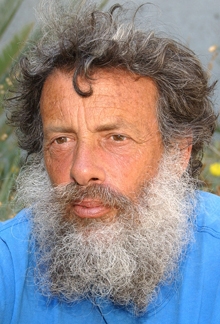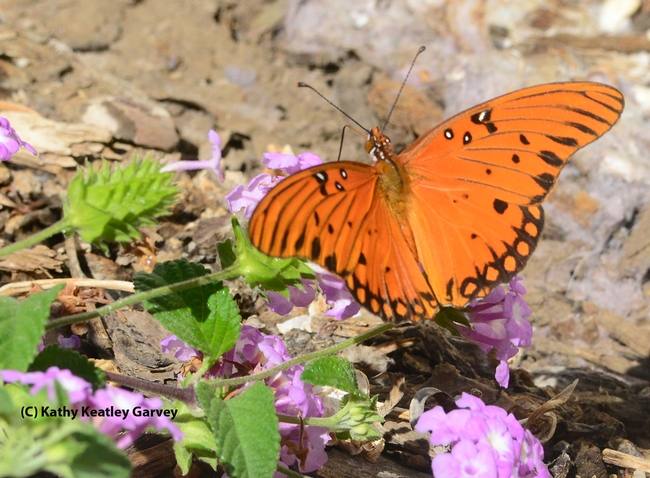
The showy reddish-orange butterfly (Agraulis vanillae) is making a comeback in the Sacramento-Davis area. In the early 1970s, it was considered extinct in that area.
“It first appeared in the vicinity of San Diego in the 1870s,” says noted butterfly expert Art Shapiro, distinguished professor of evolution and ecology at the University of California, Davis, and a member of the UC Davis Center for Population Biology. “It spread through Southern California in urban settings and was first recorded in the Bay Area about 1908. It became a persistent breeding resident in the East and South Bay in the 1950s and has been there since.”
Shapiro says it “apparently bred in the Sacramento area and possibly in Davis in the 1960s, becoming extinct in the early 1970s, then recolonizing again throughout the area since 2000.”
Shapiro describes the Gulf Fritillary as “one of the most widespread weedy butterflies in the Americas." However, he points out, it has no “native host plant in California."
Those who want to attract the Gulf Frit can do so by planting its host plant, passion flower vine (tropical genus Passiflora). The butterflies lay their eggs on the plant and voila! Leaf-munching caterpillars. Shapiro points out that the Gulf Frit caterpillars "will not eat all of the Passiflora in cultivation in California." They can be particular.
One of the Gulf Frit's favorite nectar sources is lantana (genus Lantana, family Verbenaceae.)
The Gulf Frit "has no diapause and is subject to killing out by hard freezes; in my experience, 22F is completely lethal to all stages," Shapiro says. "It has been bred for release at weddings, garden parties and the like, but there is no direct evidence linking its return in this region to such activities. If gardeners find it a pest on their Passifloras it is easily controlled by hand-picking or BT (Dipel), but it seems, to judge by my email, that most people are thrilled and delighted to have it in the garden."
Shapiro and two co-authors recently published a paper in the Journal of Biogeography (J. Biogeog.39: 382-396, 2012) on the pylogeography (geography of molecular-genetic variation) of widespread Western Hemisphere human-associated butterflies. The reearch is the work of Erik Runquist, UC Davs Department of Evolution and Ecology; Matthew Forister of the Department of Biology, University of Nevada; and Shapiro.
"We had suspected the Gulf Frit might be introduced in the United States but the genetics show not only that it is not, but that it is apparently two species--one entirely South American and one North American--but we have made no move to name anything!"
It's interesting that another host specialist butterfly, Cacyreus marshallili, a native of South Africa, is becoming a pest of garden geraniums (Pelargonium) in Europe, where "there are no native Pelargoniums," Shapiro says. "The butterfly (known as the Geranium Bronze) is becoming a real threat to the tradition of having geraniums in window boxes. Some European butterfly folks like its presence--unless they grow geraniums."
Attached Images:


